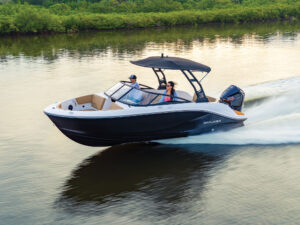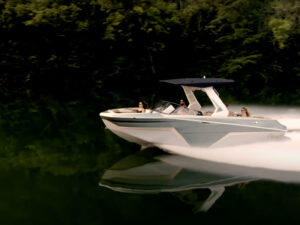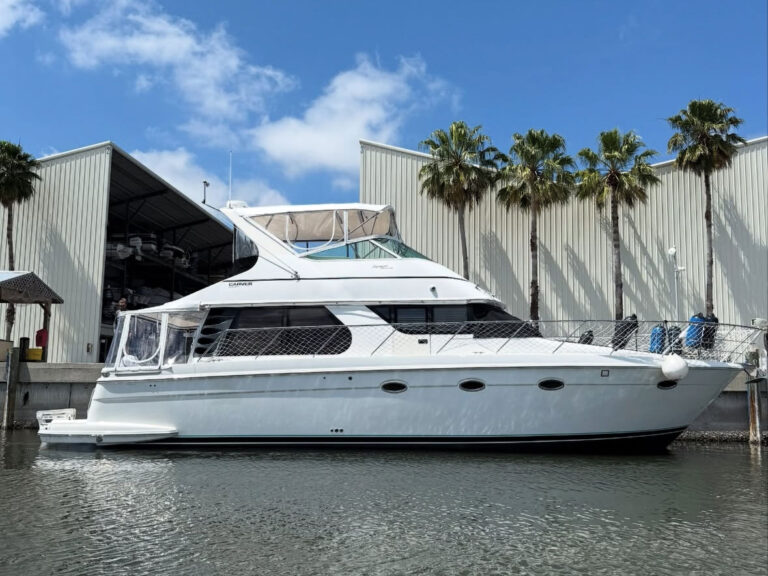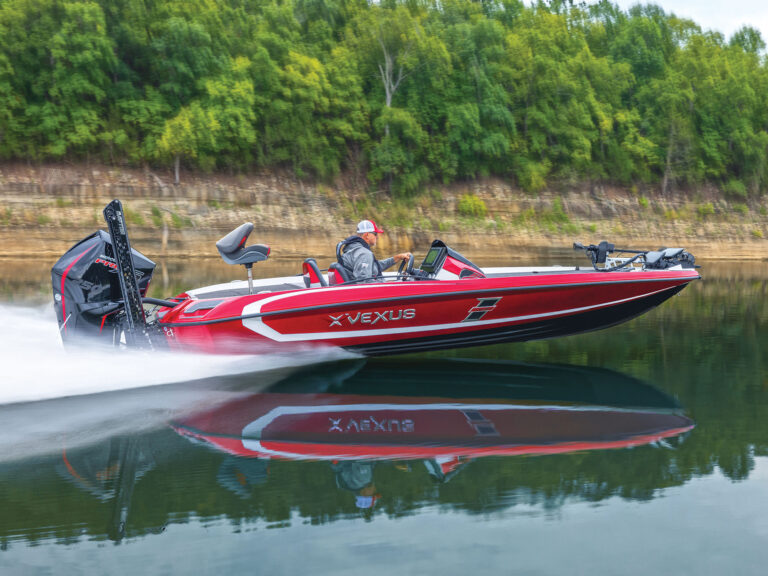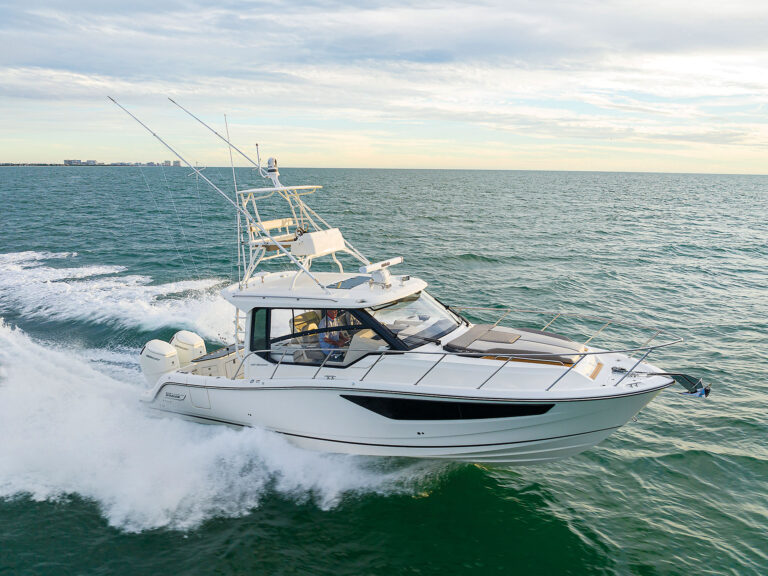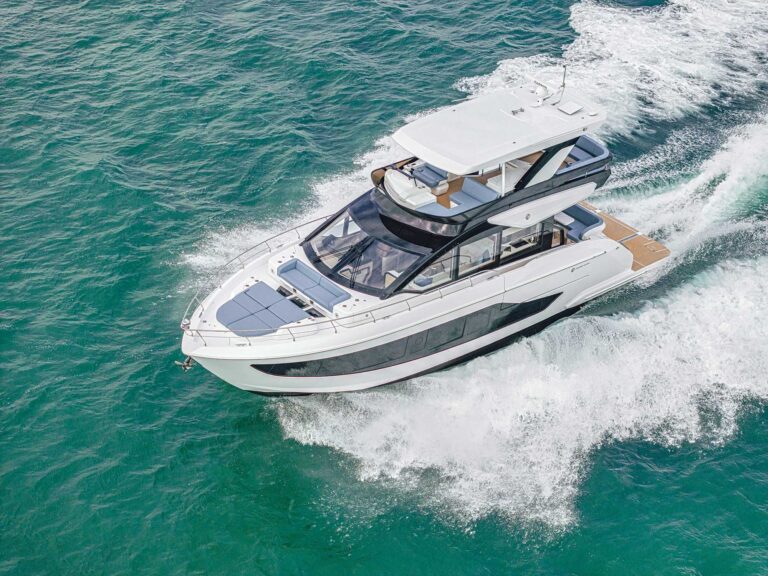With the weight of the engine placed in the stern, but with the stable tracking of inboard running gear, a V-drive proves ideal for generating the big wakes, steep ramps, smooth faces and clean alleys that wakeboarders have a jones for.
But V-drives aren’t just for tow boats. This drivetrain offers a number of unique benefits aboard cruisers and sport-fishers. Keep these pluses — and minuses — in mind if you are considering a V-drive.
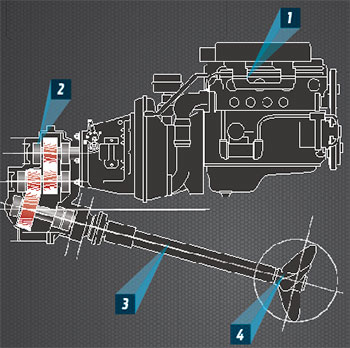
1. Aft Engine Placement
As indicated earlier, a V-drive engine is situated farther astern than on a conventional inboard or a pod drive. This frees up room amidships for tanks, storage lockers or even a midcabin berth.
However, the engines are not as far aft as in a sterndrive. Plus, a V-drive gobbles up more room belowdecks than a sterndrive by virtue of a transmission and muffler system. Crowded compartments, coupled with belts and pulleys facing aft against the transom, impede service.
2. V-Drive Transmission
The V-drive transmission systems of yesteryear possessed a bad reputation for their racket and gear noise. However, today’s V-drive transmissions from companies such as Twin Disc, Velvet Drive and ZF (all of which bolt directly to the back of the engine, which faces backwards in these systems) offer smoother and quieter operation. Gearing can be specified to suit the boat, engine and style of boating.
3. Inboard Running Gear
Compared with all the shafts, U-joints, bellows and steering components of a sterndrive, an inboard (even one with a V-drive transmission) is less complex. There are fewer elements to break, wear out or service. Also, corrosion is less of a concern with inboard running gear than with an aluminum sterndrive. An inboard’s running gear also leaves a cleaner, flatter alley behind the boat, which wakeboarders love. So do offshore anglers, because this alley makes it easier for fish to find and attack trolling lures and baits.
A V-drive is more efficient in delivering horsepower to the prop, losing only 8 percent, while a sterndrive loses 13 percent. Yet, all other things being equal, a sterndrive is faster and more fuel-efficient. Why? As we proved in our comparison “To V or Not to V”, inboard running gear generates a lot of drag, reducing speed and miles per gallon versus a sterndrive. Also, a sterndrive’s angle of thrust is virtually horizontal, further increasing efficiency over the 7- to 12-degree down angle of an inboard’s prop shaft.
4. Big Wheels
While a sterndrive offers better performance, the anti-ventilation plate limits its propeller diameter. With a V-drive, you’re not as limited, and this can be an advantage if, for example, you want to bump up the prop diameter to help improve low-speed handling. Also, if you’re cruising to a remote destination and bang up a wheel, it’s easier to find a replacement prop for an inboard versus a specialized prop or propset for a sterndrive or pod drive. Inboard running gear components tend to be fairly universal.
Ultimately, V-drive systems offer more space amidships than a conventional inboard and require less maintenance and service than sterndrive systems. While sterndrives are faster and more fuel-efficient, a V-drive can swing a bigger wheel, and you’re more likely to find a replacement prop when far from home.



